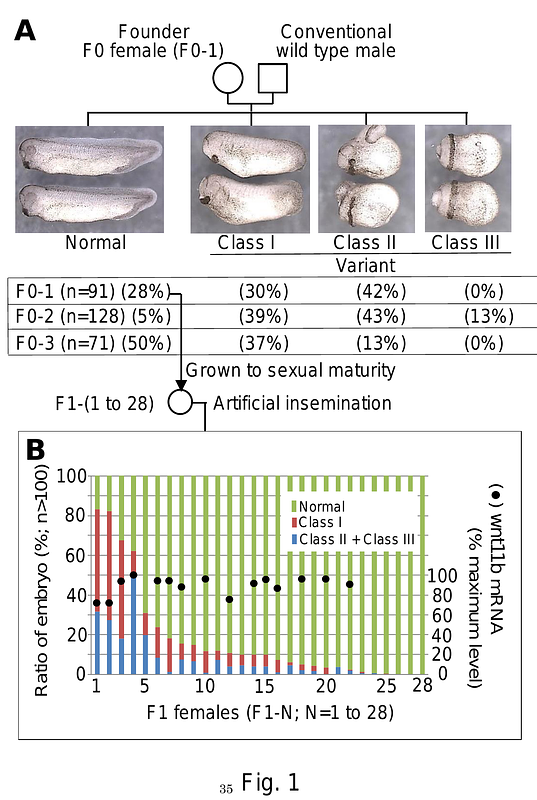Brain enlargement with a rostral bias in larvae from a spontaneously variant Xenopus female line: implications for vertebrate evolution

Brain enlargement with a rostral bias in larvae from a spontaneously variant Xenopus female line: implications for vertebrate evolution
Okamoto, H.; Hongo, I.; Yamaguchi, C.
AbstractIncreased brain size and its rostral bias are hallmarks of vertebrate evolution, but the underlying genetic factors remain poorly understood. To gain insight into the genetic background of vertebrate brain evolution, we investigated the developmental mechanisms of brain enlargement in a subset of offspring from a spontaneously occurring variant Xenopus female line. Brain enlargement in the variant larvae exhibited a notable rostral bias, which could be traced back to the neural plate, the brain\'s primordium. At the gastrula stage, variant populations showed a dorsal to ventral expansion of the Spemann organiser known to induce the neural plate from the adjacent dorsal ectoderm and give it the initial rostrocaudal patterning. In fertilised variant eggs, maternal wnt11b mRNA, a candidate dorsalising factor, had wider distribution in the vegetal cortical cytoplasm. Specifically, its lateral spread potentially facilitated the dorsal to ventral expansion of siamois expression at the blastula stage through laterally spreading Wnt/beta-catenin signalling, leading to brain enlargement via Spemann organiser expansion. Studying the spontaneous developmental variation that induces rostral-biased brain enlargement would help to uncover genetic variations that drive analogous morphogenetic transformations during vertebrate brain evolution.